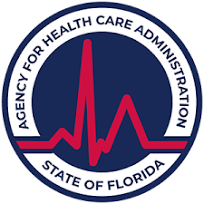In the early 1800s, “laughing gas parties” were popular. In the 1980s, most people knew about recreational “glue sniffing.” Today, recreational abuse of inhalants remains common—and life-threatening. Potential effects include:
- Hallucinations
- Driving while intoxicated
- Asphyxiation
- Cardiac arrest
- Seizures
- Coma
- Permanent impairment of muscle control
- Permanent hearing impairment
- Long-term brain damage from oxygen starvation
- Damage to lungs, kidneys or liver
- Depression and other mental illnesses
- Interest in, and abuse of, additional drugs.
Fast Facts: The Whats and Hows of Inhalant Abuse
Government research indicates that one in ten adolescents try inhalants at least once before finishing middle school, and around 3% of eighth graders sniff something each month. Even early-elementary and younger children are known to experiment.
Inhalant abuse is less common among older demographics (perhaps because chronic users “graduate” to stronger substances), but over 300,000 adults in the United States are addicted to or regularly using one or more inhalants.
And there are literally over a thousand different options, most of which can be purchased at any grocery or home-improvement store. Items most commonly used as inhalants include:
- Felt-tipped markers
- Cosmetics
- Computer-dusting spray cans
- Gasoline
- “Supercharger” (nitrous oxide) car engine tanks
- Lighter fluid
- Glue
- Paint
- Aerosol containers from whipped cream cans, which typically contain nitrous oxide (hence the common nickname “whippets” for nitrous oxide inhalants)
- Medicines such as amyl nitrate (“poppers”).
Inhalants reduce oxygen flow to the brain, inducing lightheaded and briefly ecstatic sensations. To strengthen a “high” and keep it going, users take repeated deep breaths; put heavy concentrations of a substance into balloons or on rags (often sticking both rag and user’s head into a plastic bag); or spray aerosols directly into the nose or mouth.
Is It Happening to Someone I Know?
The prevalence of inhalant abuse remains unrecognized by many; even doctors may not immediately consider it as a possible cause of respiratory symptoms or atypical behavior. Here’s what to look for as signs of inhalant abuse:
- Violent mood swings or bouts of anxiety
- Apathy
- Changes in eating or sleeping habits
- Increased secretiveness
- Frequent nausea
- Pupils dilating for no apparent reason
- Frequent red eyes or runny nose, apart from any known allergies or respiratory illness
- Frequent sore throats
- Unexplained coughing
- Unexplained nosebleeds
- Unexplained rashes, especially in the “beard” area of the face (so many inhalant users develop this symptom, it’s often called “glue-sniffer’s rash”)
- “Frostbitten” spots on the face, or complaints of cold nose or throat (caused by spraying chilled aerosols into respiratory passages)
- Slurred speech, poor coordination, dazed appearance or other signs of intoxication, without alcoholic or “smoky” odors being present
- Mysterious stains on clothing
- Strange odors on breath or clothes
- Unexplained presence of strange-smelling balloons or rags
- Unexplained presence of aerosol or chemical containers—or signs that a household’s supply of containers is being used for unknown purposes
- Damaged or cracked aerosol containers, especially if the propellant container has been separated from the can.
If inhalant abuse progresses to the stage of lasting damage, a person may develop chronic breathing difficulties, suffer memory loss, lose muscle control or turn blue from reduction in the blood’s oxygen-carrying abilities. Anyone exhibiting such symptoms should see a doctor right away.
What You Can Do About Inhalants
If you have a dependent child exhibiting inhalant-abuse symptoms, confront the situation directly. Don’t go digging through drawers seeking further evidence; this only exacerbates mutual distrust and can make a bad situation worse. Don’t make accusations or threats, either. State matter-of-factly what you’ve observed and why you’re worried, and invite your child to talk about it. If this doesn’t allay your suspicions or open an effective discussion, insist that your child see a doctor.
If you find your child or loved one in the act of inhalant abuse, get them away from the drug and into a well-ventilated area if at all possible. If they resist violently or pass out, call for emergency assistance. Don’t panic or get into an argument, and be careful not to inhale any dangerous fumes yourself.
Mention your inhalant-abuse suspicions upfront to any M.D. or therapist you consult. Many doctors may not recognize inhalant abuse from physical symptoms alone; if they only suspect drug use in general, and tests for specific substances come back negative, it could delay diagnosis and treatment.
If your suspicions are confirmed, see an addiction-treatment specialist immediately. Even if your general practitioner is familiar with inhalant abuse, he or she is unlikely to have the expertise to treat it single-handedly.
If you or anyone in your family is struggling with inhalant addiction, remove sources of temptation from the household environment. You’ll probably need expert advice on what to eliminate and what to substitute. Consider having someone else do your shopping and store your cleaning supplies.
Inhalants and Other Problem Drugs: Get Help for Your Family at Augustine Recovery
At Augustine Recovery, we emphasize treating the whole family. We also understand the effects of a wide variety of drugs, including those (such as inhalants) that have received limited attention from the public and medical community. Contact us online or at (904) 293-4674 to ask about our treatment programs.







